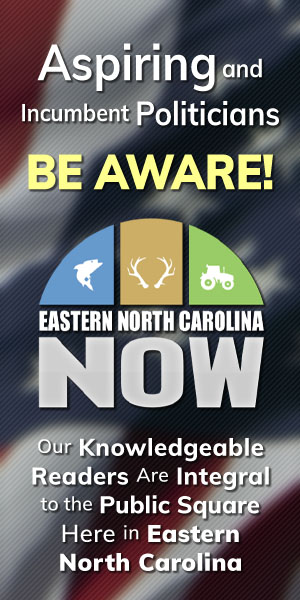Publisher's Note: This post appears here courtesy of the
John Locke Foundation. The author of this post is
Brian Balfour.
In response to rising inflation, earlier this week the Federal Reserve announced it has
"approved an interest rate hike." Several more such 'hikes' are expected this year.
But what does that mean - how does the Federal Reserve
"control" interest rates, and how are their actions related to inflation?
The process can be technical and complex, but the following is a basic breakdown focusing on a few important key concepts. The following short primer will go a long way in helping you understand exactly what is going on with inflation, interest rates, and the money supply.
The federal funds rate
Banks don't keep all their deposited money as cash on hand in their vaults. Most of it is lent out to consumers in, say, home mortgages or business loans. Banks are, however, required to keep a certain percentage of their deposits as cash on hand, typically 10%. This is known as their reserve requirement.
This reserve requirement is enforced at the end of every day, and on any given day some banks will find they fall short of this requirement while others have reserves in excess of the requirement.
Those banks that fall short will enter what is known as the federal funds market to borrow funds from other banks that have extra on hand, in order to meet their requirement. The interest rate charged on these overnight loans is called the federal funds rate.
It is the federal funds rate that the Federal Reserve targets, and is what is being referred to when the news reports on an announced change in the interest rate.
Indeed, the Federal Reserve's announcement states:
"the Committee decided to raise the target range for the federal funds rate to 1/4 to 1/2 percent."
How the Fed alters the federal funds rate
When the Federal Reserve announces its intention to
"target" a higher or lower interest rate, they don't directly change the rate itself. Instead, they engage in activity that will result in a higher or lower federal funds rate.
For instance, to raise the federal funds rate, the Fed will sell some of the assets it has on its balance sheet, largely government treasuries, mortgage-backed securities, and corporate bonds; which it had previous purchased from the banks and investment firms. In so doing, the banks buying these assets are drained of their reserves. A smaller supply of reserves available for borrowing in the federal funds market will tend to force up the interest rates on those overnight loans. The result is a higher federal funds rate.
On the other hand, to lower the federal funds rate, the Federal Reserve will do the opposite. It will buy assets like treasuries and corporate bonds from banks, injecting more cash reserves into the banking system. The higher supply of reserves will tend to lower the federal funds rate, because excess reserves are in more abundant supply.
Moreover, typically the Fed will pay for these assets not with cash it already has on its balance sheet, but simply by digitally adding money to the bank's balance sheet. In other words, creating money out of thin air. In earlier times, the Fed would physically print up new paper money to send to the banks.
In short, the Fed alters the money supply to influence the federal funds rate. And the change in money supply also has a ripple effect for other interest rates. With fewer cash reserves available, banks will tend to charge higher interest rates on their more scarce supply of loanable funds. And the reverse will be true when the money supply is increased: banks will lend out at lower interest rates in response to a higher supply of available loanable funds. Interest rates that affect consumers, like mortgages, auto loans, business loans, and credit card debt will be impacted. Shorter-term interest rates will be impacted more directly than longer-term loans.
Inflation impacts
Clearly, the Federal Reserve's actions to manipulate interest rates will impact price inflation, because it involves changing the money supply.
As stated before, an increase in money injected into the economy is the cause of price inflation. And if you want to know why we are currently experiencing historic rates of rising prices, look to the fact that the Fed's total assets has more than doubled since Jan. 2020 - rising by 117%.
For sake of comparison, the $4.8 trillion increase is nearly four times the $1.3 trillion increase to fund the massive "stimulus" in response to the 2008 Great Recession.
Conversely, with their announcement of targeting an increase in interest rates, the result will be a decrease in the money supply, with the intent of tamping down rising prices.
The question now becomes, will the Fed's actions be enough to tame runaway prices?























